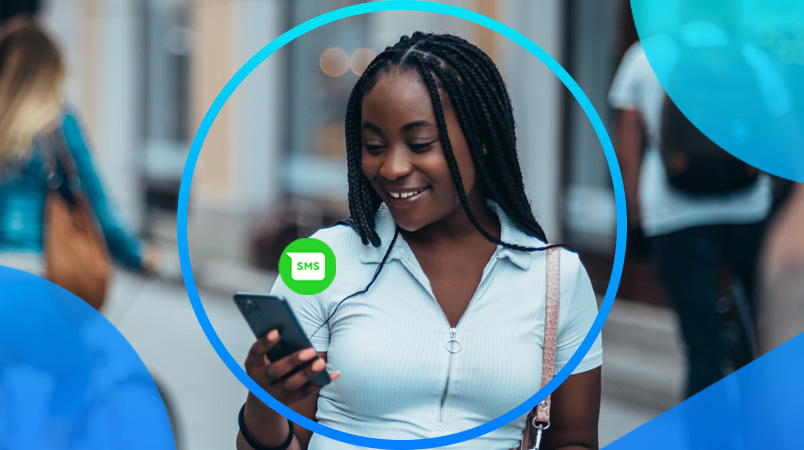I. What is Multi-Factor Authentication?
Multi-factor authentication, or MFA, requires users to identify themselves through multiple verification measures and credentials before granting them access to data or payment methods. It’s an additional security layer that protects consumers’ online accounts and transactions against hacking and data theft.
Consumers are now accustomed to using various types of multi-factor authentication in their daily lives. Examples of MFA include:
Something a user knows, like a PIN or an answer to a secret question
Something a user possesses, like a verification code delivered via SMS text message or physical tokens like USB keys
Something a user is, which may include fingerprints and facial recognition
Two-factor authentication (2FA) is a common type of MFA that requires two of these factors to verify the user’s identity. Multi-factor authentication involves at least two of these factors or all three.
More consumers are turning to their mobile devices to purchase goods and services. By 2021, mobile ecommerce could make up almost three quarters (72.9%) of ecommerce sales, totaling $3.5 trillion. This growth makes security precautions an even bigger concern to consumers and businesses alike.
If your company does a significant amount of business through mobile channels, ensuring consumer safety and trust is paramount. Here are seven benefits of adopting multi-factor authentication to keep your customers safe.
II. 7 Benefits of Multi-Factor Authentication
According to research by Microsoft, 99.9% of cyberattacks can be blocked by using multi-factor authentication. Here are seven other benefits of incorporating MFA into your mobile security strategy.
1. Reduce Fraud & Identity Theft
The days of being able to crack a simple password and gain access to privileged information are over. Requiring more than two methods of identity verification makes hacking harder for cybercriminals. MFA reduces fraud and identity theft by requiring additional security measures that thieves can rarely access.
2. Increase Customer Trust
Customers like knowing their data is secure. Even though additional verification steps can seem annoying and unnecessary at times, customers trust and appreciate businesses that take precautions to protect them seriously.
3. Achieve Compliance
Some industries require specific compliance measures, such as GDPR and HIPAA. Health, finance, and government entities demand that businesses follow strict guidelines that protect consumers’ rights and mitigate risk. Make sure you consider your business's unique needs when determining your security requirements.
4. Reduce Operating Costs
Notifying customers of suspicious activity on their accounts costs businesses time and money. MFA reduces the occurrence of fraud, reducing help desk efforts and enabling staff to focus on more complex customer service issues.
While there may be upfront costs to implement MFA successfully, the investment pays for itself in the long run.
5. Streamline Safe Mobile Transactions
Now more than ever, people are completing transactions online and via mobile devices. OTT (over-the-top) apps like WhatsApp and Facebook Messenger allow consumers to make purchases directly from the app, necessitating increased security against fraud through multi-factor authentication.
6. Combat Password Fatigue
According to NordPass, the average computer user has between 70 and 80 passwords. With so many passwords to remember, many consumers resort to using the same password on multiple accounts or creating simple, easy-to-steal passwords. Both methods lead to easy password hacking.
Adding MFA safeguards against password fatigue and adds an extra security buffer, ensuring that cybercriminals cannot hack even simple or repeated passwords.
7. Simplify the Login Process
The invention of single sign-on logins has made multi-factor authentication much easier. A one-time password (OTP) is a string of letters, numbers, or characters sent to a user for a single login attempt. One-time passwords can be sent to a mobile phone via SMS or voice, protecting web-based services, private credentials, and data.
OTPs reduce the risk of fraud by sending users time-sensitive, unique, and random codes and PINs to their mobile devices via SMS, voice, or push message. Combining MFA security with an app's convenience enables customers to use one login while maintaining high-security standards.
III. How to Set Up Multi-Factor Authentication Today
Are you ready to get started with multi-factor authentication? CM.com’s Two-Factor Authentication API authenticates new users, secures account logins, and safeguards mobile transactions with one click. Our 2FA solution builds consumer trust and increases your conversion rates across multiple channels.
One-time passwords enhance application security and manage user verification via SMS and voice calls. With a 98% open rate, SMS is known for its high visibility and reliability. By sending one-time passwords via SMS, you can reach your users wherever they are and reduce login frustrations. CM.com’s SMS Gateway API also allows you to facilitate one-time passwords with customers worldwide.
Schedule a demo today to learn more about our Two-Factor Authentication solutions.



